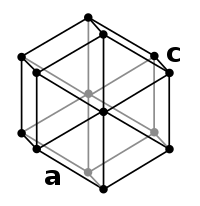
Photo from wikipedia
Biochar has been proven to possess the electron transfer property that can participate in the biogeochemical redox reaction in the environment. In this study, the electron accepting capacities (EACs) of… Click to show full abstract
Biochar has been proven to possess the electron transfer property that can participate in the biogeochemical redox reaction in the environment. In this study, the electron accepting capacities (EACs) of the barley grass biochars produced at the various temperatures from 350 °C to 800 °C were investigated. The EAC values were in the range of 0.27-0.72 mmol e- (g biochar)-1 and showed increase as the pyrolysis temperature increased from 350 °C to 450 °C, slight decrease with temperature increasing from 450 °C to 500 °C, and then increase again from 650 °C to 800 °C. The O-containing groups were the EAC moieties identified by temperature programmed desorption coupled with mass spectroscopy (TPD-MS) and fourier transform infrared spectroscopy (FTIR) and carbonyl and quinone were the main EAC moieties, accounting for 75.4%-95.7% as the pyrolysis temperature increased from 350 °C to 800 °C. Overall, carbonyl and quinone determined the EACs properties of biochar which were affected by the pyrolysis temperature. The results will help us to develop biochar with controlled electron accepting property for specific environmental applications.
Journal Title: Chemosphere
Year Published: 2019
Link to full text (if available)
Share on Social Media: Sign Up to like & get
recommendations!